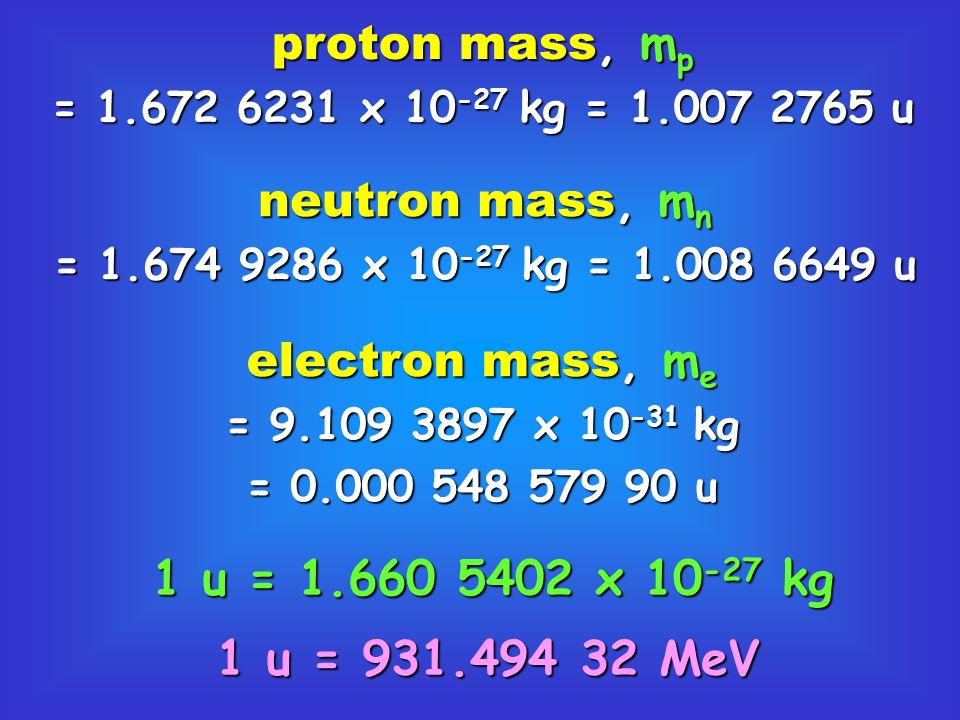


The number of neutrons is variable, resulting in isotopes, which are different forms of the same atom that vary only in the number of neutrons they possess.The number of protons determines an element’s atomic number and is used to distinguish one element from another.Neutral atoms of each element contain an equal number of protons and electrons.Electrons have a mass of approximately 0 amu, orbit the nucleus, and have a charge of−1. However, protons have a charge of +1, and neutrons are uncharged. Protons, Neutrons, and Electronsīoth protons and neutrons have a mass of 1 amu and are found in the nucleus. In these atoms, the positive and negative charges cancel each other out, leading to an atom with no net charge. Scientists define these charges as “+1” and “−1.” In an uncharged, neutral atom, the number of electrons orbiting the nucleus is equal to the number of protons inside the nucleus. When considering atomic mass, it is customary to ignore the mass of any electrons and calculate the atom’s mass based on the number of protons and neutrons alone.Įlectrons contribute greatly to the atom’s charge, as each electron has a negative charge equal to the positive charge of a proton. Therefore, they do not contribute much to an element’s overall atomic mass. Therefore, the number of neutrons in an atom contributes significantly to its mass, but not to its charge.Įlectrons are much smaller in mass than protons, weighing only 9.11 × 10 −28 grams, or about 1/1800 of an atomic mass unit. Although similar in mass, protons are positively charged, while neutrons have no charge. Scientists define this amount of mass as one atomic mass unit (amu) or one Dalton. Protons and neutrons have approximately the same mass, about 1.67 × 10 −24 grams. Atoms are made up of protons and neutrons located within the nucleus, with electrons in orbitals surrounding the nucleus. Structure of an atom: Elements, such as helium, depicted here, are made up of atoms. This can be determined using the atomic number and the mass number of the element (see the concept on atomic numbers and mass numbers). The hydrogen atom (H) contains only one proton, one electron, and no neutrons. Atoms have different properties based on the arrangement and number of their basic particles. The outermost regions of the atom are called electron shells and contain the electrons (negatively charged). The nucleus (center) of the atom contains the protons (positively charged) and the neutrons (no charge). Atomic ParticlesĪtoms consist of three basic particles: protons, electrons, and neutrons. Many biological processes are devoted to breaking down molecules into their component atoms so they can be reassembled into a more useful molecule. For example, water is composed of hydrogen and oxygen atoms that have combined to form water molecules. Atoms combine to form molecules, which then interact to form solids, gases, or liquids. It is equal in mass to a proton or it weighs 1 amu.Īn atom is the smallest unit of matter that retains all of the chemical properties of an element. neutron: A subatomic particle forming part of the nucleus of an atom.proton: Positively charged subatomic particle forming part of the nucleus of an atom and determining the atomic number of an element.atom: The smallest possible amount of matter which still retains its identity as a chemical element, consisting of a nucleus surrounded by electrons.Neutrons are uncharged particles found within the nucleus.Each electron has a negative charge (−1) equal to the positive charge of a proton (+1).Protons and neutrons have approximately the same mass, about 1.67 × 10 −24 grams, which scientists define as one atomic mass unit (amu) or one Dalton.An atom is composed of two regions: the nucleus, which is in the center of the atom and contains protons and neutrons, and the outer region of the atom, which holds its electrons in orbit around the nucleus.


 0 kommentar(er)
0 kommentar(er)
